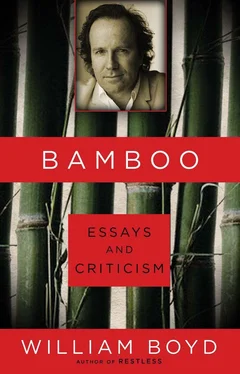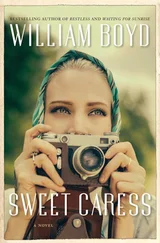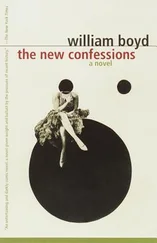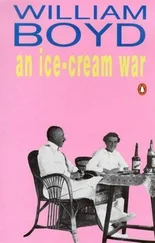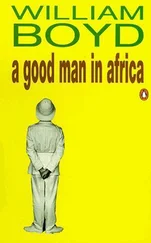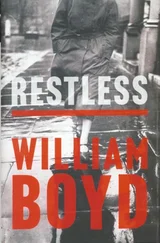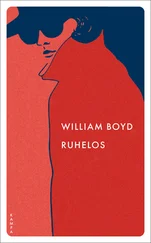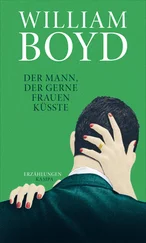From the outside, friends and colleagues variously described Vaughan as intelligent, charming, diffident, somewhat aloof, critically acute and astringently witty and generally good company. The self-portrait that emerges from the journals is considerably at odds with this, at once fierce, cold and anguished. They are excellently and lucidly written but what is so striking is the unsparing honesty, the brutal objectivity. The self-analysis is relentless. Full of self-doubt, seeded with contempt and rare exhilaration, Vaughan probes and reiterates his dilemmas and anxieties — both artistic and personal — with a determination and dedication that are prodigious. So far as his development as an artist is concerned it is as if Vaughan had realized that for him the route to success was through sheer persistence and hard work rather than inspiration and imagination. True, Vaughan had Sutherland’s own huge discipline and effort as an early model, but this tenacious and unceasing toil in the older artist must have chimed with elements that already existed in his own personality. A working practice was established that he was not to deviate from. Vaughan was not, it seems to me, a naturally gifted draughtsman in the way that, say, Augustus John was. The line in a Vaughan drawing is not fluid and suggestive but firm and heavily scored. Sketchbooks are filled with dense dark pencil drawings, fretted with cross-hatching, which are worked up in the studio into sombre, muted gouaches or oils in which form and composition dominate. The whole artistic achievement of Keith Vaughan from World War Two onwards is a strenuous, laborious one; its nature is obstinate, striven-for, built up slowly and steadily, relying on constant effort and patience to see the work through to a successful culmination, rather than afflatus or spontaneous invention.
After the war, during the forties and fifties this dedication began to pay off. Vaughan’s reputation grew and he began to move in established metropolitan artistic and literary circles. He taught at Camberwell, Central and the Slade. He was friend and associate with many of the artists that make up the neo-romantic movement, notably Robert Colquhoun, Robert MacBryde and John Minton. By 1950 his career was firmly established. On a personal level it seemed that he had found some measure of happiness too. He set up house with one of his painting students, Ramsay McLure, but although they remained together for the rest of Vaughan’s life the passion swiftly dimmed and Vaughan returned to his old methods of obtaining sexual satisfaction. At some time in the fifties he bought a machine from Gamages department store which he adapted to pass electric current through his genitals. For the rest of his life it was to the machine he turned when he was in need of sensual excitement or consolation.
Biographically, the last thirty years of Vaughan’s life were uneventful. His subject matter remained remarkably constant — more often than not the male nude in a landscape — as his style became more abstract. He showed regularly and the prices he commanded rose steadily. He and McLure moved to a flat in Belsize Park, and increasing prosperity soon allowed him to buy a cottage in Essex. McLure lived there while Vaughan led a solitary life in London during the week, returning to the country at weekends. Vaughan’s working routine was quickly established and rarely varied. He would paint in the mornings and break for lunch at 12.30. After lunch there would be a siesta followed by a shorter period of work until seven when he had his first whisky. He took great care over his solitary dinner and made sure to drink a bottle of good wine. After dinner he might watch TV, listen to music, or write in his journal.
Sexually he resorted more and more to the machine. He went on occasional “lust sleuthing” forays in Soho looking for rough trade but he came to rely on masturbation for sexual release, perfecting the operating procedures of his machine and employing other flagellatory or masochistic props — metal-tipped canes, needle and thread, mustard and red pepper.
The last ten years of Vaughan’s life as evidenced by the journals represent, as their editor Alan Ross describes, “a descent into hell … redeemed by … frankness, spleen and dry humour.” Self-analysis, nostalgia and misanthropy are mingled with despair and meticulous chronicling of his experiments with the machine (which, in a display of typical Vaughan candour, he kept on open show in his studio). Yet to the outside world, until the onset of his final illness, he appeared little changed; still teaching, still painting successfully, still reluctant for company, yet, when he was persuaded to go out, apparently enjoying himself. In 1975 he developed a malignant cancer of the bowel and underwent a colostomy. Radiation treatment followed and Vaughan became a semi-invalid, becoming progressively iller as the cancer advanced and complications set in. On the morning of 4 November 1977 he decided to commit suicide. He swallowed the pills with some whisky and sat down to record his final thoughts in his diary before he died. “Oblivion holds no terrors for me,” he wrote. These last pages of this extraordinary document are very moving, full of stoic resignation and dignity. The final lines read: “65 was long enough for me. It wasn’t a complete failure, I did some …” And then nothing.
He did some good work. Vaughan’s posthumous artistic reputation continues to grow as indeed does his personal fame, owing to the publication of the journals last year. Malcolm Yorke’s fine biography is a valuable and diligent adjunct to them, filling in many of the gaps and also setting Vaughan’s work firmly in its artistic and historical context. Inevitably, though, the journals form the best and unique access to Vaughan’s strange and complex personality. Any biography would suffer by comparison in this regard but one senses here and there that, however well-equipped Yorke is to talk about the work, the life of Keith Vaughan — or rather the life in Keith Vaughan — remains something of a mystery to him.
1990
Stanley Spencer is an odd fish. The responses to his work are both complex and contradictory — they always have been, and the new exhibition at the Barbican, “Stanley Spencer: The Apotheosis of Love,” will prolong the debate. In my own case, one of the most nagging of the many dilemmas his art provokes is this: for someone who could clearly paint so well, why did Spencer often paint so badly? It is not simply a matter of indolence or easy nonchalance on his part: there is nothing slipshod about his bad paintings, indeed in places they are rendered with fanatical, pedantic diligence, but for me the great problem at the centre of his achievement remains this schism, this schizophrenia of technique. It is rather as if a chess grandmaster voluntarily switched to draughts, or Chopin confined himself to ragtime.
When you look closely at, for example, the extraordinary deftness and skill with which Spencer has painted the shadow of Patricia Preece’s lace negligée as it falls on her thigh (in the remarkable Patricia Preece, 1936) , or the way, in the great self-portrait of 1959, the cropped grey fringe falls over the seamed brow, you wonder how the same man could have produced the simplicities and inept distortions of Villagers and Saints or The Lovers . It is like setting a Lucian Freud beside a Beryl Cook. In the end such a wilful abdication of talent — if there is no obvious reason: sloth, drink, drugs, penury or mental collapse — remains baffling.
Perhaps this sort of deliberate shift — from the refined to the unrefined, from the subtle to the crude — occurs when innocence is over-venerated, and in Spencer’s case this notion may be particularly apt. Broadly speaking, what we value in the native or the primitive — the pleasure prompted, say, by a Grandma Moses or an African carving — is the delight we take in seeing aspects of our world depicted in a manner un-mediated by sophistication, by familiar cultural reference, by centuries of tradition and so on: all the rules and regulations, expectations and assumptions of a mature art form. I suppose that motives of this sort may inspire the highly accomplished artist to attempt to reproduce these effects, to scour away the gunge and clutter of too much skill and civilization, too much thought and reflection. By fashioning a false innocence we may borrow some of the properties of the real thing: fool’s gold has duped many a gnarled prospector.
Читать дальше
